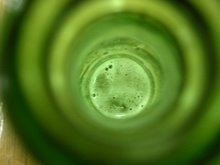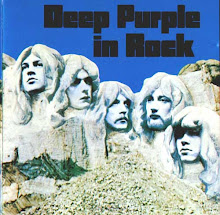The last ten years have seen a lot of changes in Beijing, and in its bar scene. I've reflected on these transformations a number of times before (for example, in considering the evolution of my own drinking habits, in reminiscing about the SARS summer, in categorizing the various expat 'types', and in satirizing the life-cycle of the 'hidden gem' bar). However, having just gone through my China Meltdown Moment and quit the country, possibly for good, this seems like an apt time for one last review of the major nightlife phenomena I witnessed during my time in The Jing.
This had ended up being rather long, so I'll divide it into a three part series; the further instalments will be posted this Thursday and next Tuesday.
This had ended up being rather long, so I'll divide it into a three part series; the further instalments will be posted this Thursday and next Tuesday.
A new city rises
It seems incredible now, but even the Wangfujing shopping street - long the city's tourism hub! - was only created in the late '90s. Most of the city's modernization programmes didn't kick in until after it had won the Olympic bid in 2001. When I arrived in 2002, the 5th Ringroad and the Line 13 elevated commuter railway were still under construction; development was in places a bit patchy even between the 3rd and 4th Ringroads, and - except in the university district to the north-west - there was scarcely anything yet built outside the 4th Ring, it was still open countryside; Gui Jie was nearing the end of a major road-widening project, and the original Russian Market in Yabaolu (a semi-open air affair in corrugated steel hangars) was just about to be demolished to make way for the risibly named Aliens Street mini-mall. Most of the mega-malls and grandiose office buildings that now define central Beijing have only been completed in the last few years; hardly any of them date back further than 2006.
The scouring of the hutongs
While much of the new architecture is undoubtedly impressive, I can't help feeling that most of it was thrown up without any real plan or purpose - other than to satisfy the greed of fly-by-night property developers and corrupt government officials. The wholesale destruction of great swathes of the old city - the labyrinth of narrow lanes and ramshackle single-storey houses that are the heart and history of this place - to make way for all these (still massively underused) new buildings has been has been one of the saddest stories of Beijing in the Noughties. Balanced development, planned development, reconstruction that shows some respect for community spirit and historical heritage - this has been almost unknown in Beijing.
Commercialization, even worse than the bulldozer
The few hutong districts that remain are being remorselessly colonized by insanely optimistic entrepreneurs who seem to think that the city can't possibly have too many coffee shops or quirky boutiques. Nanluoguxiang led the way, the process starting round about 2004 and accelerating dramatically in the last year or two before the Olympics. What was once a quaint little alleyway lined with traditional shops and cheap restaurants has become a seething tourist trap that targets only Chinese punters rather than foreigners. Sadly, the whole of the Gulou area is now starting to go the same way.
The expat population grows... ever younger and more American
When I first came here, I'd guess the 'Western' expat population was only a few tens of thousands; and most of them were Shunyi-ites who'd rarely venture into the city. The number of foreigners you might ever actually meet was only a few thousands, and those who frequented the bar areas might only have been in the hundreds. It was a very cosy little community back then: you did have the sense that you basically knew everyone, at least by sight. Americans seemed relatively under-represented; Canadians and Kiwis and Aussies and Brits (and the French, funnily enough) appeared to be far more numerous, and were certainly far more conspicuous on the bar scene. Numbers studying Mandarin were far lower, and a good many of them were mature students. But most of the folks you'd meet out in bars were professionals of one sort or another; a lot of them might be English teachers, and fairly fresh out of university, but they were 'grown-ups'. There's probably been a ten-fold growth in the number of Mandarin students since the early Noughties, and, in particular, a huge increase in American high school and college students coming here just in the last three or four years. This has transformed the Wudaokou and Sanlitun scenes, and (for a middle-aged fuddy-duddy like me) not in a good way.
Inflation takes off, the slow dying out of the budget scene
Bars in Beijing have always tended to be a bit overpriced, compared to the generally low cost of living here. But back in the early Noughties prices were tethered to some extent by the thriving budget sector at the bottom end of the market: few places charged more than 10rmb for a Tsingtao, and almost none dared to ask for more than 15rmb, because there were so many places selling it for 5rmb (although at this price it was often of dubious provenance) - alongside 10 or 15rmb mixed drinks. Ah, those were the days! Spiralling rents caused by the property boom, a larger and more affluent customer base, and a sudden surge in the general level of inflation (it started getting bad back in 2007, and took a huge leap after the government's spendthrift stimulus programmes to ward off recession in 2009; supermarket prices have doubled in the last 10 years; restaurant prices have gone up by almost that much in only 5 or 6 years - with the majority of that increase happening just in the last 3 years) have led to a steady rise in bar prices, to the point where most Beijing bars are now no cheaper than their counterparts in the US or the UK. It's still not as upmarket as Shanghai, but it has been closing the gap rapidly. I don't regard that as a good thing, either.






No comments:
Post a Comment